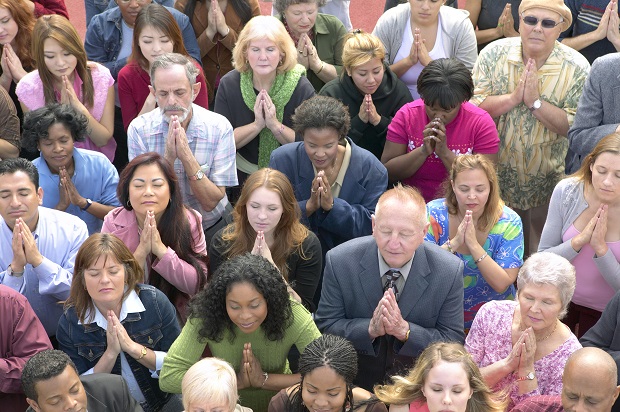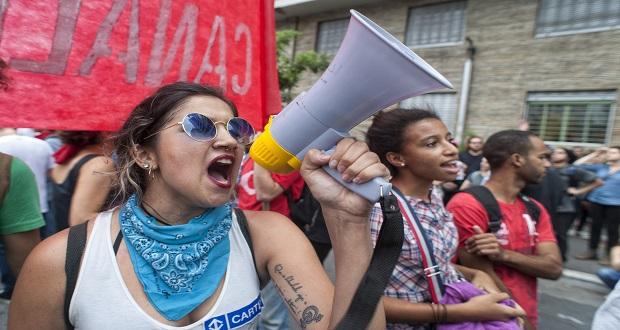The persistent nature of social justice challenges can leave organizations in the precarious position of not doing enough, leaving teams feeling discouraged, frustrated, and overwhelmed. In organizations where there may be frequent staff turnover or busy and demanding work environments, there are often few opportunities to hold onto and lift up the rich connections people make, or to share stories of strength and positive change.
The persistent nature of social justice challenges can leave organizations in the precarious position of not doing enough, leaving teams feeling discouraged, frustrated and overwhelmed. Click To TweetAs a clinical psychologist, I have learned the importance of listening to how we share stories. People naturally tell stories about their lives and experiences in a way that reveals how they understand and relate to themselves, their social contexts, and the world (Drustrup and Baptiste, 2019). Similarly, how we share stories in our organizations and teams can either inspire or dampen efforts to support connections and move us toward a collective vision of equity. Stories that center only the challenges can often leave us feeling hopeless about creating change (White and Epston, 1990).
How we share stories in our organizations and teams can either inspire or dampen efforts to support connections and move us towards a collective vision of equity. Click To TweetInstead, we need to reframe the way we tell stories around organizations’ social justice efforts — a way that offers teams a refreshing narrative that serves to amplify the often subjugated stories of appreciation, strength, and hope embedded in an organization’s journey through equity, diversity, and inclusion work.
We need to reframe the way we tell stories around orgs’ social justice efforts—a way that offers teams a refreshing narrative to amplify the often-subjugated stories of appreciation, strength and hope in an org's journey through… Click To TweetIn my practice I use the organizational tree of life approach — a collective narrative methodology that lends itself to new ways of reframing dominant narratives within professional spheres. This approach builds on its roots in the ‘Tree of Life approach’ developed by Ncazelo Ncube and David Denborough to support vulnerable children in East and Southern Africa to overcome and discuss difficult life experiences in a way that gives a voice to marginalized experiences and enhances stories of strengths, resources, and resilience (Ncube, 2006).
The adapted organizational tree of life can be usefully applied to any institution to encourage reflection on shared professional identities, as well as individual and collective strengths that have supported movement toward a collective vision of the organization. In my diversity and inclusion work I have found that using this framework with a focus on a social justice cause (such as antiracism) offers a culturally sensitive team building experience that unearths stories of hope and resilience that can alleviate DEI fatigue.
Using this framework with a focus on a social justice cause (such as antiracism) offers a culturally sensitive team building experience that unearths stories of hope and resilience that can alleviate DEI fatigue. Click To TweetBy using storytelling to graciously acknowledge the individual and collective social justice contributions of team members past and present, this approach also honors the path that people have walked in “doing the work.”
By using storytelling to graciously acknowledge the individual and collective social justice contributions of team members past and present, this approach also honors the path that people have walked in 'doing the work.' Click To TweetUsing the visual metaphor of a tree, the roots, ground, compost, trunk, branches, leaves, and fruits all represent various layers of the narratives organizations can collectively reflect on in order to amplify alternative stories that can remind teams of, and reconnect them to, their individual and collective strengths.
By drawing each part of the tree, starting with the roots, teams are invited to share stories of the history, culture and underlying values that underpin the organization. The ground offers space to consider the ways in which day-to-day activities of the organization are reflective of its values. Here people are invited to consider how their team may have deviated from its stated values and how this may have added to or detracted from the overall mission. It also offers an opportunity to consider how communities or clients experience the organization through the lens of a social justice cause.
Moving to the trunk, the model invites reflections of the individual and collective skills, competencies, and talents of those within the team. This provides an opportunity to explore how these skills enable leaders to support or realize the identified commitment to DEI work.
The branches symbolize hopes, dreams and directions for the team. What are the steps that can support the realization of these dreams? Who is walking alongside the team in pursuit of these visions? What further tools are needed to realize the dream?
Leaves are all about the support network. This could be other teams either in or outside of the organization or exploring how past and present employees have supported the pursuit of the identified goals.
The fruits/seeds are the gifts that have supported the team in this work. These may not necessarily be physical gifts, but attributes such as courage to speak truth to power, persistence and commitment, caring for others, or centering stories from marginalized communities.
The compost heap represents the standards or experiences that the team no longer wants to be defined by. These could be the lessons learned so far and reflections on how they can be re-sown back into the soil to nourish future efforts.
Once the tree is completed, the team is invited to think about the various hazards that trees are subjected to — that is, the ways in which the team has weathered and navigated challenges whilst pursuing justice. What are the effects of these storms? How have teams responded to them? This part of the exercise allows people to make connections between challenges and the stories of hope and resilience.
Finally, end with a celebration to honor the contributions of the team while reflecting on the experience of sharing stories, reviewing the finished tree and acknowledging the areas for growth through the storms. The celebration also considers stories of survival, strength, skills and relationships within the teams’ ecosystem.
If conversations around diversity efforts feel stagnant and draining, centered only on stories of the challenges and setbacks, this approach offers a rich way to instill hope in teams by amplifying stories of the unvoiced victories and individual contributions, valued areas of collective growth and appreciated resources.
References:
Drustrup, D., & Baptiste, D. R. (2019). Problem-Saturated Stories in Narrative Couple and Family Therapy. Encyclopedia of Couple and Family Therapy, 2334-2336.
Ncube, N. (2006). The Tree of Life Project: Using narrative ideas in work with vulnerable children in Southern Africa. International Journal of Narrative Therapy and Community Work, 1, 3–16.
White, M., Wijaya, M., & Epston, D. (1990). Narrative means to therapeutic ends. WW Norton & Company.




















